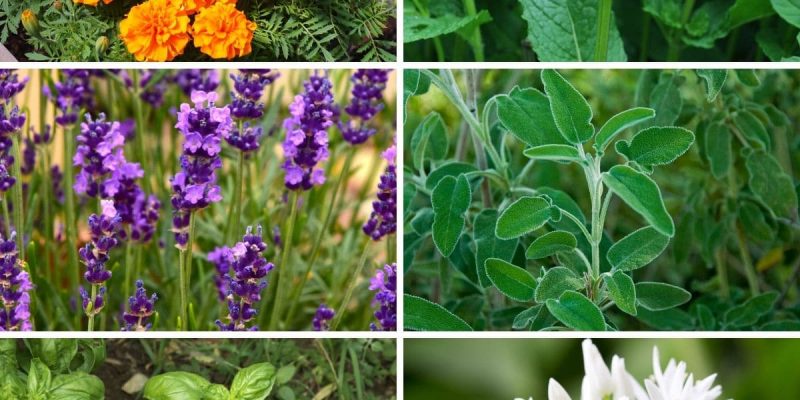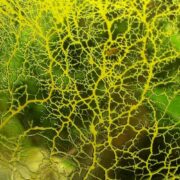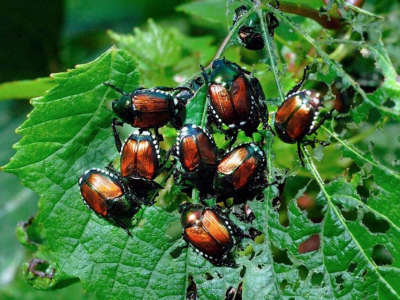Bugs are troublesome. When you open the window for some fresh air, a few uninvited guests enter through it. The trade-off between fresh air & troublesome bugs can be quite hefty. The most obvious solutions to get rid of the bugs are setting up traps, spraying pesticides & other chemicals, or use aids like a swatter, and many more.
In this article, we specifically talk about a unique approach to keep away these pesky bugs. Use plants. Not only do they protect from these pesky creatures, but they also add to the décor of the house. It is a win-win situation! We would be listing plants that can help you repel the bugs naturally.
How do Plants Repel Bugs?
Plants naturally repel the bugs due to the essential oils present in them. These bugs hate the very smell of it. As these bugs cannot resist these oils, they don’t hover nearby. Now, in most cases, there isn’t a scientific study backing it. So, it is based on observations & experiences.
The plants release the essential oils as fragrances. They move in the air as small molecules. Thus, the fragrance spreads throughout & bugs don’t tend to enter the vicinity. This is how most plants repel the bugs. These plants usually are called ornamental plants, as the add-on to the home décor.
Another natural way to repel the bugs is by having carnivorous plants at home. These plants fulfill their nitrogen requirement by feasting on pesky bugs. They attract the bugs that have already entered your home & then ingest them. Thus, eliminating your problem.
List of Plants that Repel Bugs.
The list comprises plants that repel ticks, mosquitoes, house flies, and other pesky pests & bugs. A few plants can repel several bugs, while others are specific to a particular bug or set of bugs. Here is the list:
Basil

Basil is well-known as a medicinal herb. It is widely used as a food ingredient too. It has a distinct flavor, due to which it is added to various food items. Guess what? It is an effective natural repellent. Basil repels mosquitoes, house flies & ticks. Just place a few basil plant pots near the windows & doors.
Fresh basil leaves are used to prepare many insect & pest repellents. It has a strong, pungent smell. You can use any basil species, as all the species ward off pests & insects. You can have several basil species at home to keep a blend amongst them.
Basil loves sunlight. So, make sure you keep it under sunlight for about 5 to 7 hours. It also needs good drainage & a moist environment. The pH of the soil should be neutral. Water it regularly. If the soil is dry to touch, then water the plant.
Lavender

Lavender is very famous for its fragrance & health benefits. It is widely used in aromatherapy. Its strong fragrance repels mosquitoes, ticks, fleas, house flies, and many other pesky bugs. Lavender has been used for many centuries for its pleasant sweet fragrance. Place the lavender plants near the alleyways, doors & windows.
Essential oil from lavender can be extracted & is widely used in aromatherapy, fragrances &insect repellents. The essential oil vaporizes from the lavender leaves. Though there is no scientific study backing it, lavender is said to block the smell of many insects along with mosquitoes.
Lavender is easy to grow! It can grow under extreme circumstances too! Though the plant loves warm weather. It requires sunlight for about 6 to 8 hours. The lavender color will also add-on to the décor. It requires well-drained soil. Few people (and pets) can be allergic to the plant. If that’s the issue, then skip planting it.
Mint

Mint is a well-known herb. It is widely used as a flavoring agent in food items. Be it a mint-flavored chewing gum or the mint latte, and the flavor is irreplaceable. Mint is also used to repel mosquitoes, ticks, ants, house flies, and other insects. The essential oils are present on the leaves, stem & even the flowers. Thus, mint is used to prepare insect repellent. But, even placing the plants near the windows does the job.
Mint is a common name for a family of Liliaceae species. Most of them are edible, while a few, like catnip, aren’t edible. Mint is usually grown in pots or patio, as it grows very quickly & aggressively. Moreover, it’s also easy to pluck a few leaves if you’re preparing a mint latte or ice mint tea. Mint has a strong, pungent smell. You can grow any mint species as most of them have insect-repelling properties.
Usually, people don’t have an allergy to mint. Mint is actually very safe for people & pets. Catnip is a mint that the cats absolutely love! Though if ingested in excess, then there can be a problem for the pets. So, mint is overall a better option.
Lemon Grass

Lemongrass is a common term used for the Cymbopogon family. Lemongrass has an essential oil named citronella oil that is used to prepare fragrances & insect repellents. Lemongrass species are ornamental plants that can grow about four feet in height. It is an annual plant & a well-known mosquito & tick repellent.
Lemongrass is widely used in Asian cuisine. It also added to soups & salads as a garnishing agent. Lemongrass has a distinct smell. Hence, it is used in the preparation of fragrances. You can place the lemongrass plants near doors & windows to ward off mosquitoes & ticks.
Lemongrass requires a good amount of sunlight & well-drained soil. The plant can be easily grown. If there is no allergic reaction to lemongrass, it has no major side effects on people (except pregnant women). If ingested by pets, then lemongrass can cause digestion problems.
Rosemary

Rosemary is an excellent insect repellent, as it repels ticks, moths, house flies, mosquitoes, and many other insects. It is a beautiful & aesthetically pleasing ornamental plant. Rosemary can be grown in pots, containers & patios. The plant has an essential oil that acts as an insect repellent. The essential oil is present on the leaves & stem of the plant.
Rosemary is a perennial plant that has a Mediterranean origin. It has a strong woody fragrance. Rosemary oil & leaves are used as food condiments. It has many medicinal properties too. This herb can be placed near the alleyways, doors & windows to repel the pesky intruders. If you are one of those campfire enthusiasts, then thrown in some rosemary leaves in the bonfire. It will have a pleasant smell & ward off insects.
Rosemary plants love hot & dry weather. The plant requires a good amount of sunlight for about 6 to 8 hours. It also requires regular pruning. Rosemary plants require slightly sandy & well-drained soil. The plant is safe for people & pets.
Sage

Sage is another very effective insect repellent. They effectively repel ticks, house flies, mosquitoes, and other insects. It can be grown in your backyard or on the patios. The essential oils of sage are used in the preparation of insect repellent.
Just like rosemary, it is also a perennial plant. You can throw some sage leaves in the bonfire to keep away the bugs & spread a pleasant earthy smell. Sage is also used in several food recipes.
Sage loves warm weather. The plant requires a good amount of sunlight. Sage requires loamy & well-drained soil. The preferred pH should be slightly acidic to neutral. The plant usually doesn’t have any side effects on people. It is also considered very safe for pets.
These six plants are the best ones to keep the insects away from your home. There are six more plants that repel ticks, flies, & aphids, respectively. Now, if you are interested in the plants that keep away ticks, Marigold & Garlic are the two best options. Bay leaves & Thyme are the best ones for keeping the flies away from your home. Similarly, Fennel & Dill keep away the aphids. Likewise, there many other plants that are useful in warding off several pesky pests.
Note: All these plants ward off a wide range of insects & pests.
[table id=1 /]













Comments